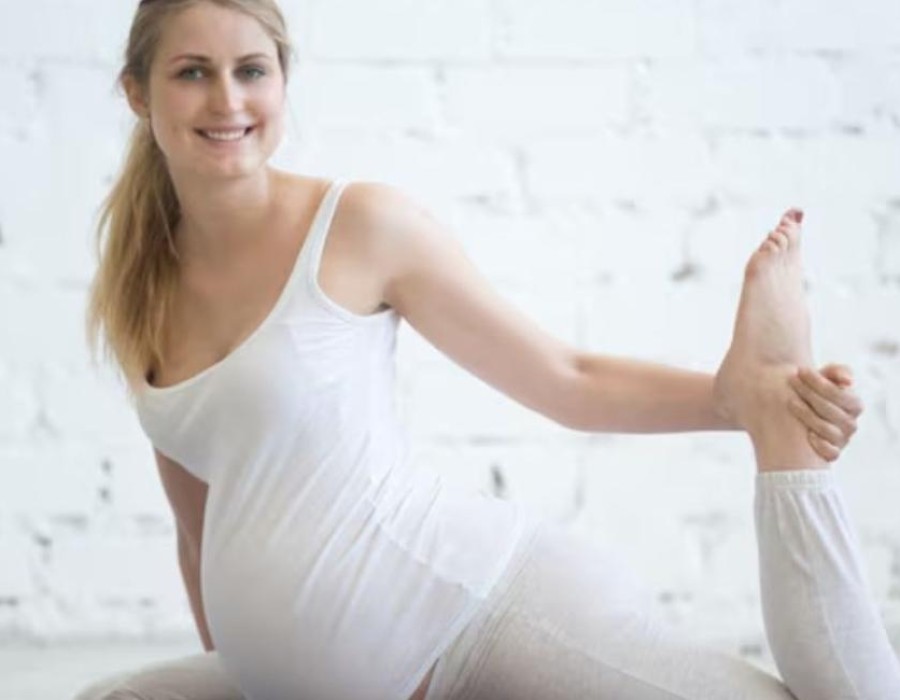Yoga Moves to Avoid While Pregnant: Essential Guide for Expecting Mothers
Pregnancy is a beautiful journey of transformation, both physically and emotionally. Many women turn to yoga during this time to stay fit, reduce stress, and prepare the body for childbirth. While prenatal yoga offers numerous benefits—such as improved flexibility, better circulation, and relaxation—it’s equally important to understand that not all yoga poses are safe during pregnancy. Some postures can put unnecessary pressure on your abdomen, affect blood flow, or strain ligaments that are already softening due to hormonal changes. Therefore, knowing the yoga moves to avoid while pregnant is crucial to ensure the safety of both the mother and the baby.
Why Certain Yoga Poses Are Unsafe During Pregnancy
During pregnancy, the hormone relaxin increases in your body, loosening joints and ligaments to prepare for childbirth. While this flexibility can be helpful, it also makes you more prone to overstretching or injury if you’re not careful. Moreover, as your belly grows, your center of gravity shifts, making balance-based poses more challenging and risky. That’s why it’s vital to practice awareness and modify your routine accordingly.
1. Deep Backbends
Poses like Full Wheel (Urdhva Dhanurasana), Camel Pose (Ustrasana), or Bow Pose (Dhanurasana) can excessively stretch the abdominal muscles and compress the lower back. These are among the key yoga moves to avoid while pregnant, especially in the second and third trimesters. Instead, try gentle backbends like Cat-Cow Pose or Supported Bridge Pose for a safe and soothing stretch.
2. Deep Twists
Deep twisting poses such as Revolved Triangle Pose (Parivrtta Trikonasana) or Revolved Chair Pose (Parivrtta Utkatasana) can put pressure on your abdomen and reduce blood circulation to your uterus. Always avoid twists that compress your belly. Instead, opt for open twists, where the rotation comes from the upper back and shoulders while keeping the belly space open and relaxed.
3. Belly-Down Postures
During pregnancy, lying face down on your belly becomes unsafe as your bump grows. Poses like Cobra (Bhujangasana), Locust (Salabhasana), and Bow Pose (Dhanurasana) directly put pressure on your abdomen. These are definite yoga moves to avoid while pregnant because they can restrict blood flow and strain the uterus. Replace them with gentle alternatives like Cat-Cow or Extended Puppy Pose.
4. Strong Core Workouts
While gentle core strengthening is beneficial for supporting your lower back, intense abdominal exercises—like Boat Pose (Navasana) or Plank variations—can overstretch the abdominal muscles and contribute to diastasis recti, a condition where the abdominal wall separates. Focus instead on mild strengthening through modified planks on your knees or gentle pelvic tilts.
5. Inversions
Advanced inversions such as Headstand (Sirsasana), Handstand (Adho Mukha Vrksasana), and Forearm Stand (Pincha Mayurasana) are not recommended unless you have years of experience and practiced them safely before pregnancy. These poses can cause loss of balance, leading to falls. Safety is the priority—so it’s best to skip them or use a wall and the supervision of a prenatal yoga instructor.
6. Deep Forward Folds
Deep seated or standing forward folds can compress the abdomen and restrict breathing. Poses like Seated Forward Bend (Paschimottanasana) or Standing Forward Fold (Uttanasana) should be practiced with legs apart to give your belly enough space. The focus should always be on lengthening the spine rather than folding deeply.
7. Hot Yoga and Overheating Practices
Another important category in the list of yoga moves to avoid while pregnant includes hot yoga or any practice done in a heated environment. Overheating can lead to dehydration, dizziness, and potential complications for your baby’s development. Always practice in a cool, ventilated room and stay hydrated throughout.
8. Lying Flat on the Back After the First Trimester
After the first trimester, it’s best to avoid postures that require lying flat on your back, like Savasana or Bridge Pose, for long periods. The weight of the uterus can compress the inferior vena cava, a major vein that returns blood to your heart, leading to dizziness or reduced circulation. Use props such as bolsters or cushions to elevate your upper body for a safe and comfortable modification.
Safe Alternatives for Pregnant Women
Instead of focusing on yoga moves to avoid while pregnant, it’s empowering to learn which poses can support your pregnancy journey. Gentle and restorative yoga can improve your well-being and prepare your body for labor. Safe poses include:
- Cat-Cow Pose (Marjaryasana-Bitilasana): Enhances spinal flexibility and eases back tension.
- Child’s Pose (Balasana): Promotes relaxation and relieves fatigue.
- Goddess Pose (Utkata Konasana): Strengthens legs and opens hips.
- Supported Bound Angle Pose (Supta Baddha Konasana): Calms the nervous system and supports pelvic opening.
- Side-Lying Savasana: Ideal for relaxation while maintaining safe circulation.
Tips for Practicing Yoga Safely During Pregnancy
- Consult your doctor before starting any new exercise routine.
- Join a prenatal yoga class guided by a certified instructor.
- Use props such as bolsters, straps, and blocks for support.
- Avoid overstretching, even if your flexibility has improved.
- Stay hydrated and listen to your body’s signals at all times.
- Modify or skip poses that feel uncomfortable or cause strain.
Final Thoughts
Yoga during pregnancy can be deeply nourishing when practiced with awareness and safety in mind. Remember, this is a time to nurture, not to push your limits. By understanding the yoga moves to avoid while pregnant, you empower yourself to create a mindful, supportive practice that strengthens your connection to your growing baby and your body.
Always prioritize comfort, stability, and gentle movement over intensity. When guided correctly, yoga can become one of the most beneficial and beautiful parts of your pregnancy journey.





Comments